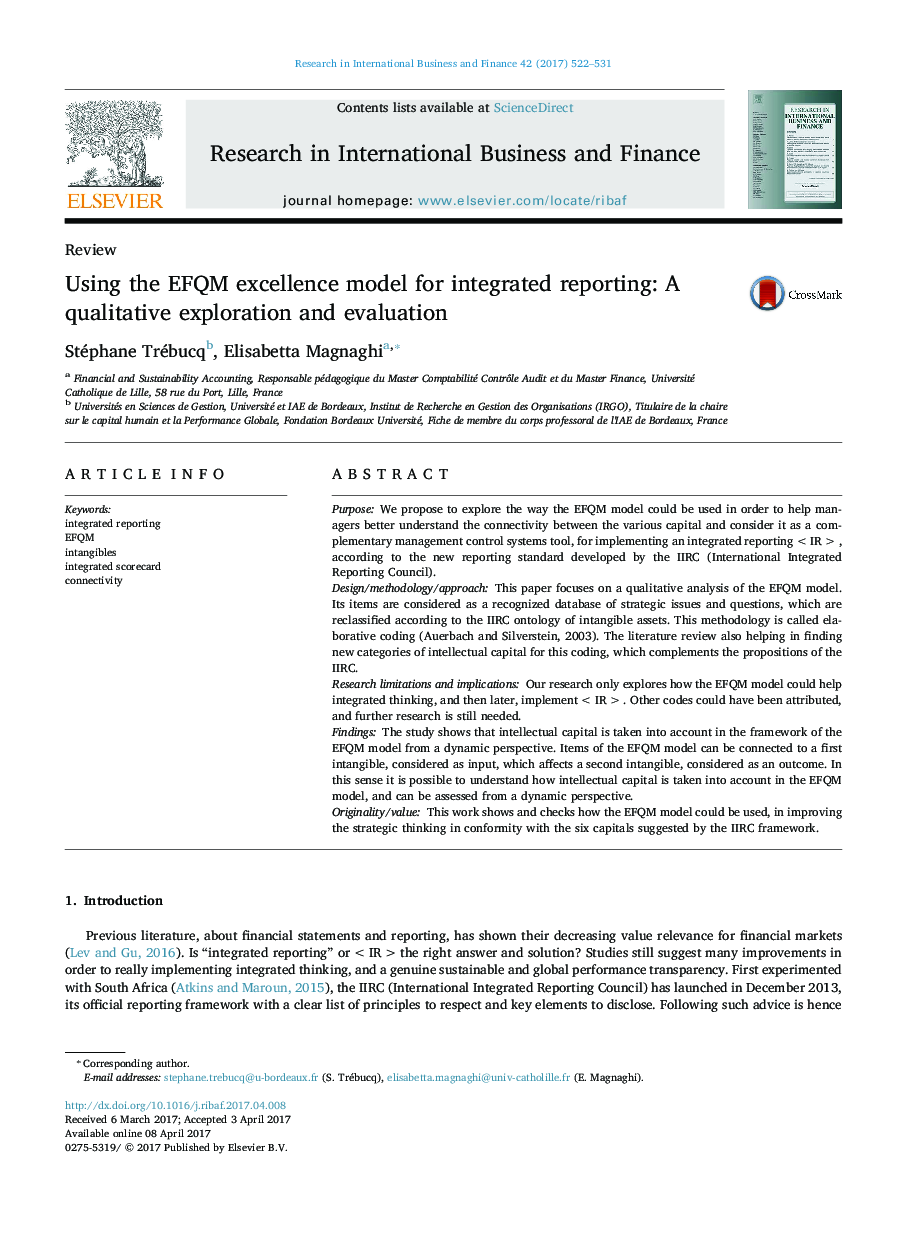| Article ID | Journal | Published Year | Pages | File Type |
|---|---|---|---|---|
| 5107287 | Research in International Business and Finance | 2017 | 10 Pages |
PurposeWe propose to explore the way the EFQM model could be used in order to help managers better understand the connectivity between the various capital and consider it as a complementary management control systems tool, for implementing an integrated reporting
